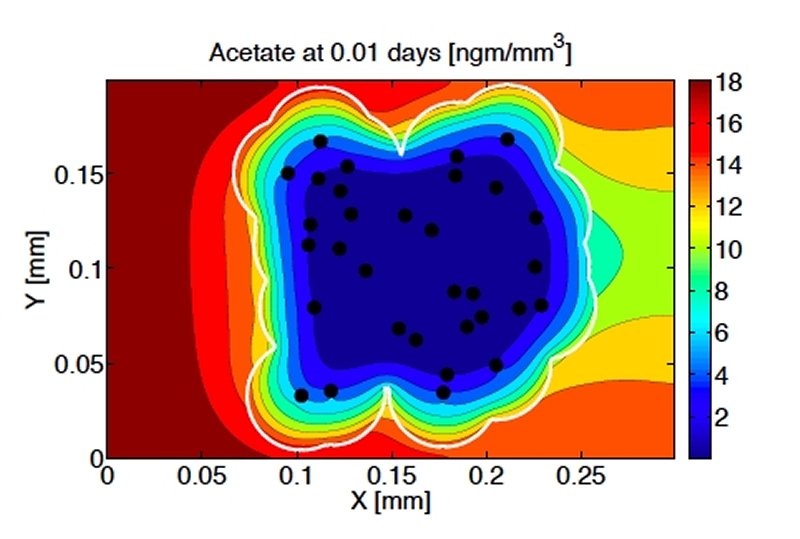
Better Biofilm Reactors for Microbial Fuel Cells

Northwestern University researchers have found that microbial fuel cells designed to produce electricity and clean wastewater, or biofilm reactors, are more efficient when biofilms don’t become too thick.
Microbial fuel cells are a potential source of green energy, producing electricity without combustion while cleaning wastewater. But, before industry builds commercial facilities, researchers must carefully assess the production capabilities and engineering designs of biofilm reactors. The Northwestern University research identified a design issue that could bear significantly upon reactors’ production capacity.
The findings also highlight the ability of scientific computing to complement laboratory research. Laboratory experiments cannot reveal the small-scale structure of biofilms or other precise information related to microbial fuel cell power production. Nor can they explain the sharp decrease in power production that occurs as biofilms mature.
To address this gap, researchers simulated the fuel-cell activity using mathematical models. They discovered that the biofilm overgrowth can lead to power loss. The images at right show how even slight bacterial overgrowth can lead to regions in the reactor with drastically reduced power production.
The Initiative for Sustainability and Energy at Northwestern University did the computer modeling in collaboration with laboratories at Arizona State University and the University of Wisconsin, Milwaukee. The research serves as an example of how mathematicians, scientists and engineers can combine their talents to solve challenging problems.





















